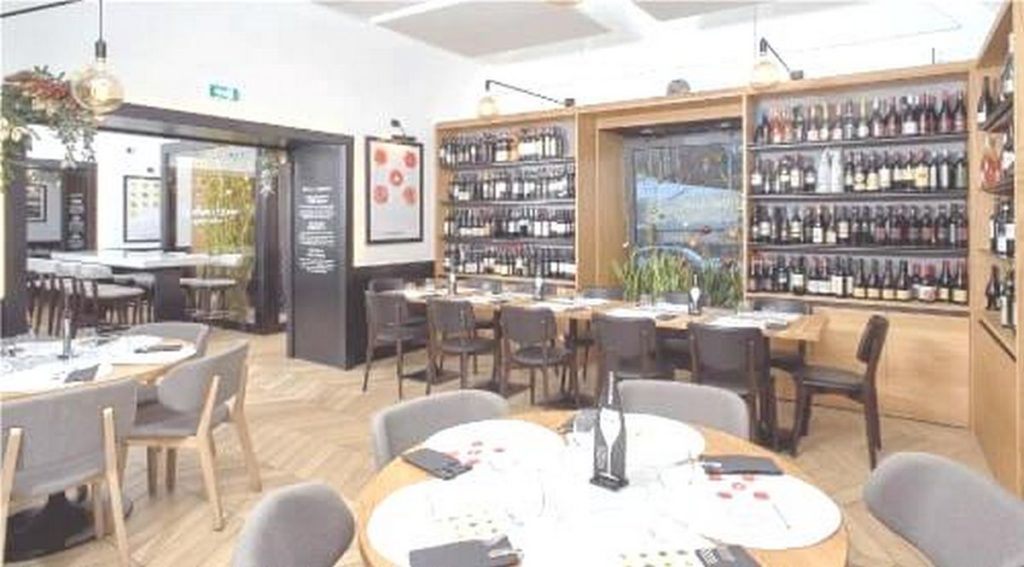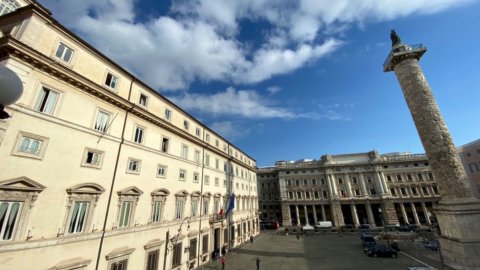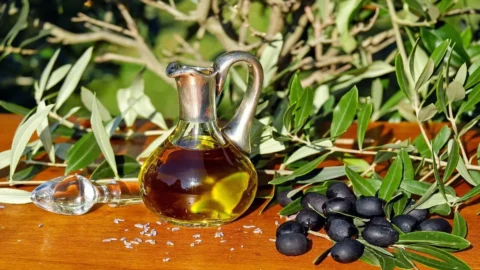“The story of my family is the story of three generations of pizza makers. Our story starts out from below (the "Vascio" small house with one or two rooms, located on the ground floor, with direct access to the street, where the people of the alleys lived for centuries, those of the less well-off, ed) where my father was born, and where my grandmother sold on the street on Sundays the pizzas “today a uotto” those that were eaten right away – those were hard times – and were paid for after eight days, the time to scrape together some money. My father Giuseppe left the street and opened the first pizzeria in Portici. Here my brother Francesco and I grew up and trained and when it was our turn to carry on the company, we decided to move to Largo Arso in San Giorgio a Cremano. It was a risky choice, we bet on a square little known to the public which at the time was outside the traditional gastronomic circuit. But our audacity or recklessness was rewarded. Things began to go well, word of the quality of our pizza spread, people came not only from Naples, but also from all over Campania. At first it was a 70-metre room square then three years ago here we are expanded to 400 meters squares with over two hundred seats e 30 employees. Finally last year we landed in Naples on the Riviera di Chiaia, one of the most elegant and loved historic districts of the city, a stone's throw from the splendid setting on the Lungomare Caracciolo where we have opened a 350 square meter restaurant, facing the sea, with 210 seats".
Here it is described in all simplicity the adventure of the Salvo brothers, a name that today is a certainty of the national panorama of excellent pizza. We are at the level of the great master artisan pizza makers of Italy, a small number that includes personalities of the caliber of Franco Pepe, Enzo Coccia, Romualdo Rizzuti, Gennaro Battiloro, Ciro Salvo (who is not a namesake but a brother who took an independent path in partnership with other people and achieved success, good blood does not lie), Gino Sorbillo, Antonio Starita.
And in their simplicity you have to pry them with pliers as their pizzeria has established itself in Italy and abroad. Because the Salvo brothers were the first to bring pizza to a three-star Michelin restaurant, no less than the prestigious and refined "Da Vittorio" in Brusaporto of the Cerea brothers. And the Salvos always have brought pizza to Paris to the Louvre, yes, in the Caroussel which is part of the complex of the great French museum. And they always have been invited for Columbus Day in New York churning out pizzas for the Italian American party receiving compliments from the mayor of NY De Blasio who ate and appreciated.
But where do we start from to get there? “What unites us somewhat in our families – replies Salvatore – is that we don't have a date on which he started working. For example, if I go to work in a factory like Fiat, I can say that I was hired on January 1, 2000. We don't have any dates to mention, we were born with our hands in the dough. I'm not saying that our mother gave birth to us on a sack of flour but certainly up until a few minutes before giving birth to her, her place was hers, she lived the pizza, she breathed the pizza and we with her… ”.

Of the pizza, which comes out of their ovens, the Guide of the Italian Pizzerias of Gambero Rosso cher assigns them the fifth national score equal with Sorbillo, Ciro Salvo and Battiloro, talks about it in these terms: "That of Francesco and Salvatore is not only a true Tonda with a generous diameter, but rather the result of an obsessive attention to the unique and recognizable dough, tasty, light and fragrant, guarantor of digestibility and meltability, enriched by raw materials selected with transparency among small producers". Expressions that until recently we would have read with reference to a gourmet or starred restaurant, certainly not a pizzeria. And it certainly does not seem like a simple pizzeria that the Salvos have in San Giorgio a Cremano, blown glass chandeliers, upholstered chairs and armchairs, linen and hemp napkins, design furnishings, bookcases of wines from the most prestigious cellars in Italy, sparkling and even branded Champagne, because here pizza is a serious matter and is accompanied by wine from a wine shop, a high-level hospitality service. Are we or not in the temple of a Unesco heritage?
And it says it all that the international organization has awarded not the pizza itself, but theart of Neapolitan pizza makers, because gentlemen, it's about time we understood that Neapolitan pizza is not a quick snack, it's not just a pleasant food for stomachs looking for something alternative to consume at any time of day or night, but it's a chapter of history , of culture, tradition and taste of Naples above all but of our whole country.
“We often hear ourselves asked – confesses Salvatore, 1,95 in height, a rugby player's physique like his brother Francesco, who is close to 2 meters, always an engaging smile on his lips that reflects his sunny disposition – what is our secret. We reply with a smile that the experience that we have handed down for generations is based on it an in-depth technical culture, combined with enthusiasm for our work. And anything but simple intuition, but the stimulus to improve and learn from the Neapolitan culinary culture”. And he adds: ”Starting working very young, with our father Giuseppe, we breathed the value of the sacrifices made out of passion. And we are jealous and proud of a consolidated family tradition and we carry it forward with passion and meticulousness".
What to say more? There is the whole history of the Neapolitan culture of pizza in these words, a story that dates its birth back over the centuries, in the dark alleys of the neighborhoods of Naples, where the sun never arrives, as food for the poor, which then rises with the Unification of Italy and the birth of the Margherita pizza in honor of the new Queen of Italy visiting Naples with her husband, at the laurels of a food that is no longer street food but which is eaten for fun, for socialising, as alternative choice to restaurants, sitting in pizzerias. And that for 20 years now it has become a worldwide cult to the point that a president of the United States visiting Italy, Clinton, asks to be able to taste it in the Spanish quarters and makes an actress of the caliber of Julia Roberts declare "I a love story with pizza. Let's say it's a kind of bread, love and carbohydrates."
Because plebeian, popular, fashionable, pizza is the expression of a people, the Neapolitan one, which survives a hundred thousand dominations, which combines misery and nobility, which metabolizes mystical venerations and organized crime, the opulence of the Baroque and the irony of the populace. An indefinable and unclassifiable blend, but always supported by the passion for one's land (and let's add the sea) and its fruits.
And like Naples, even pizza escapes any definition. We are talking about a simple product, made of simple elements such as flour, oil, tomato and mozzarella and yet it has nothing really simple. Salvatore explains it well when he says: “We try every day to perfect it thanks to the experience we mature and the passion for experimentation and research. Simplicity is our key to reading, what animates us and drives us every day to do our job better and better".
The fact is that pizza speaks today a universal language, in the West as in the East. It has been calculated that billions of them are produced every day. Everyone understands pizza, the little one understands it, the old one, those who know how to eat it and those who don't know how to eat it, those who are Neapolitan and those who are not. It's a bit like football where everyone is technical commissioners, everyone is coaches, sports directors, and therefore everyone discusses pizza.
And to make it clear what we are talking about, it is worth remembering that it has been calculated that almost 7 million pieces are baked every day in Italy, that on average we eat 7,6 kilos of pizza a year, about 38 Neapolitan pizzas per person, nothing compared to the United States, which devours 13 kilos per person
But how can pizza be defined then? “It's a concept, an idea - Salvatore replies - it is tradition, passion, mysticism in some cases. Because if we talk to the old pizza makers, those who live on empiricism who do this because they've seen it done, they've always done it, then we realize that for them it's almost like retracing an alchemical ritual. Perhaps we are evolving this myth of the alchemy of the Neapolitan pizza maker a little, but however much knowledge we can acquire, due to the cultural elements we have available, there are probably many things we do almost unconsciously and this is the beauty of Pizza. I always like to say that the craft of the pizza maker is not taught, it is assimilated. I don't remember seeing my father say to me: this is how this is done! He said to me: see how it's done. Which is very different, because I had to learn it by seeing, because it had to come natural for me to repeat that gesture, those almost ritual executions of the manufacturing process".
Don't try to ask at this point where the secret of pizza is. Because the answer will be clear: ”There is no secret. The secret is technique, it is knowledge, it is a working system that must stimulate certain processes that take place during manufacturing of pizza: leavening contextual to that of fermentation and maturation which leads to cooking in a completely anomalous way compared to bread-making. In fact, Neapolitan pizza is considered by some observers to be an imperfect bread-making act. In a Neapolitan pizza you must not find any of those characteristics that a perfect bread-making must have. crunchiness, marked breading, browning of the crust, scent of the acidity of the bread, of the very strong sourdough). All this does not belong to Neapolitan pizza. They belong to Neapolitan pizza softness, meltability, a mild honeycomb (the structure of the gluten that expands with leavening, which gives it a tone of acidity) which makes it open like a wallet, the crust which must be irregular and elastic, which must not be crunchy (which becomes a defect). Because if I take a slice of pizza it has to bend, it doesn't even have to bear the weight of the tomato. And then we think that pizza has a violent cooking, an exasperated cooking. Those who don't know it can come to think that it's raw, but Neapolitan Pizza is like that because the secret is also in the tradition it carries within. A tradition that is different from family to family. It's a bit like a vegetable garden: what I do is different from what my neighbor does because maybe I choose a certain time to water the field or I use a particular fertilizer or because in the past I put a little more manure into the land ”.
There is no escape, the more you talk to Salvatore the more you realize that behind that magic circle that responds to the name of Neapolitan Pizza there is a mysterious, contradictory and indefinable world like the city that produced it.
So much research makes one wonder what it should lead to? For Salvatore Salvo "A fundamental goal, which is still far away, is that when we talk about pizza we are talking about quality. Today we are inspired by how one works in certain bistros, in certain starred restaurants, we believe that the type of work done can also be transmitted to pizzerias, also evolving the concept of shop. In Naples there is a conception that I no longer like, of the very spartan service left to the little boy on duty or to the lady with the house apron, served at home because what matters is the good pizza. But the pizzeria is a place where the family spends more and more time, they get together. And with the changed economic conditions, the family is also asking for a more refined environment and service. And of course a quality product that lives up to it. Between Naples and the province there will be at least 10.000 pizzerias, but those where one can speak of a product of excellence and quality are still few. And my regret is that they are always the same despite the paths that we and our more successful colleagues have taken in recent years. I'm sorry to say it but we are sometimes aped rather than followed. We are not forerunners or prophets but it is certain that we have to break down the equation: pizza equals cheapness or product massification”.
In fact, thinking about it in the last 15 years, pizza has undergone a massification process similar to that of hamburger bars with famous brands, but the levels often remain, so to speak, approximate. "This is precisely the point - Salvatore enthuses - we absolutely have to recover the concept of quality, of that pizza maker who took the tomatoes from the farmer or like my father did who went to buy tomatoes in Herculaneum in October because that was the only tomato that he could put in his pizzas. Or when you went to get the mozzarella directly from the dairy that made it in front of you". It is that leap in quality that has allowed Italian catering to place itself immediately after France among the international cuisines of excellence. Study, choice of raw materials, cooking techniques, Choices that have paid off as evidenced by the number of Michelin stars that today shower every year on Italian restaurants. “The same thing – now that it's a World Heritage Site – should happen for pizzerias. Those premises which, in order to keep prices low, have betrayed its qualitative characteristics by resorting to industrial supplies, have caused serious damage to the image of one of the flagships of Made in Italy in the world. The time has come to rethink the concept of pizza as a concept of absolute quality”.
Meditating on Salvatore's words, one thinks that actually when we eat a Neapolitan pizza it is as if we were renewing a mystery rite in the magic of a city with a thousand faces, a thousand stories, a thousand whys. And the secret is perhaps in its thousand souls, which always bring back the flavors and scents of this sun-kissed land that has gone through the centuries while always remaining true to itself.





